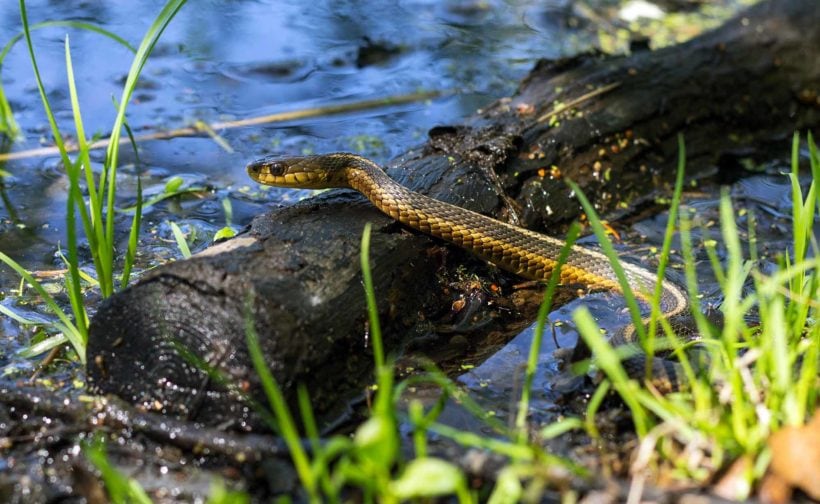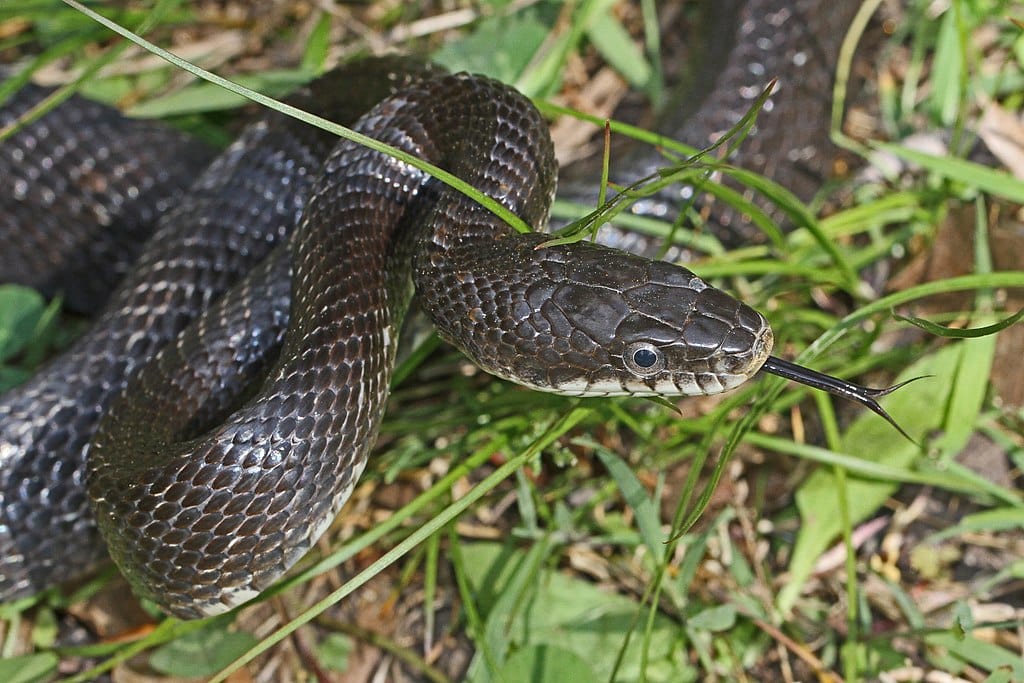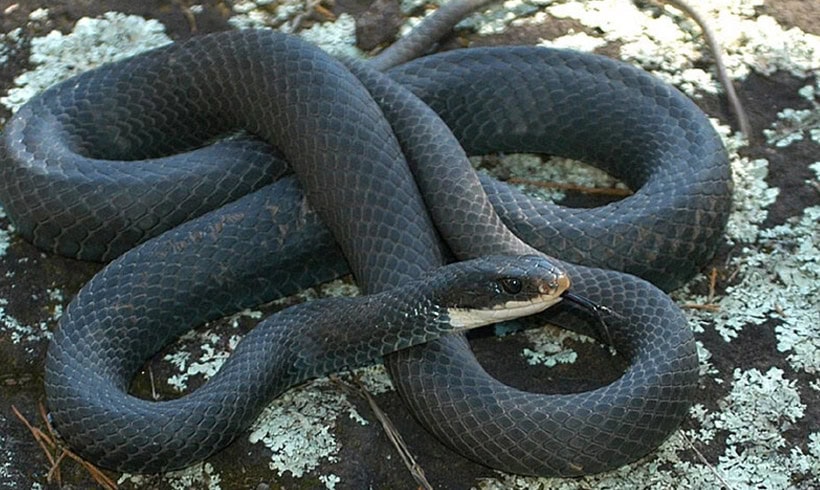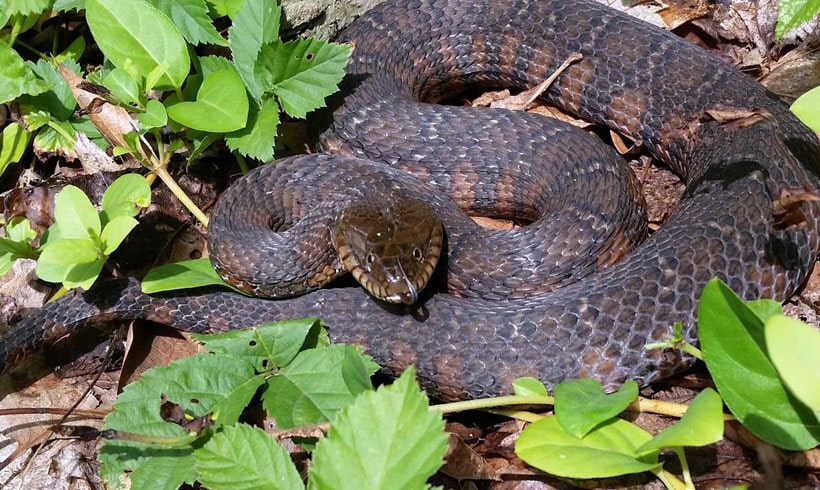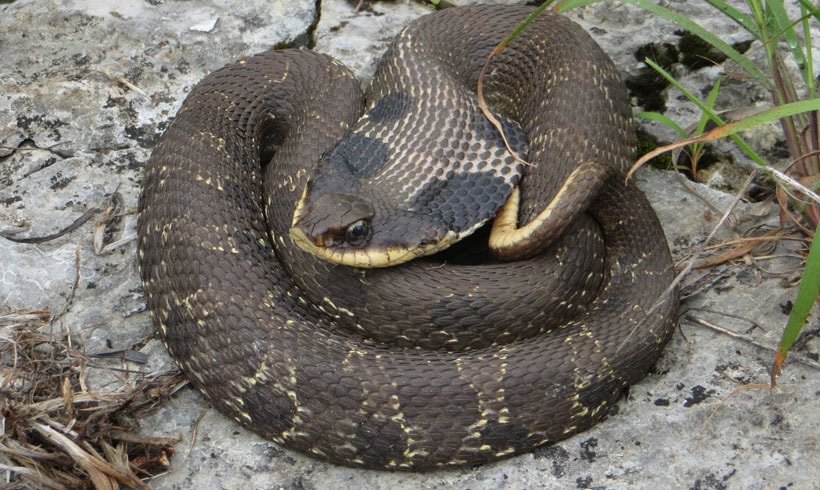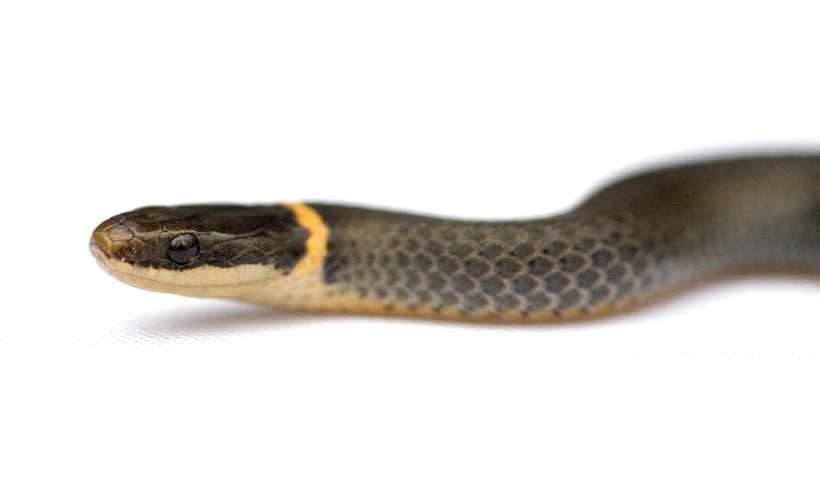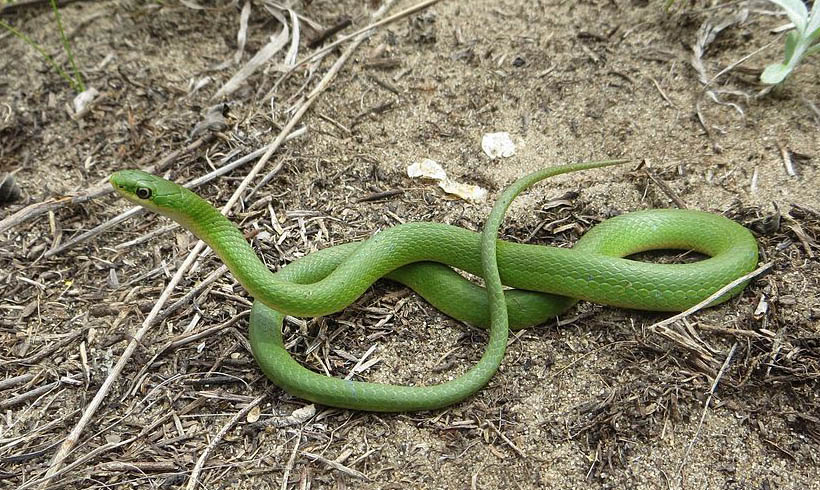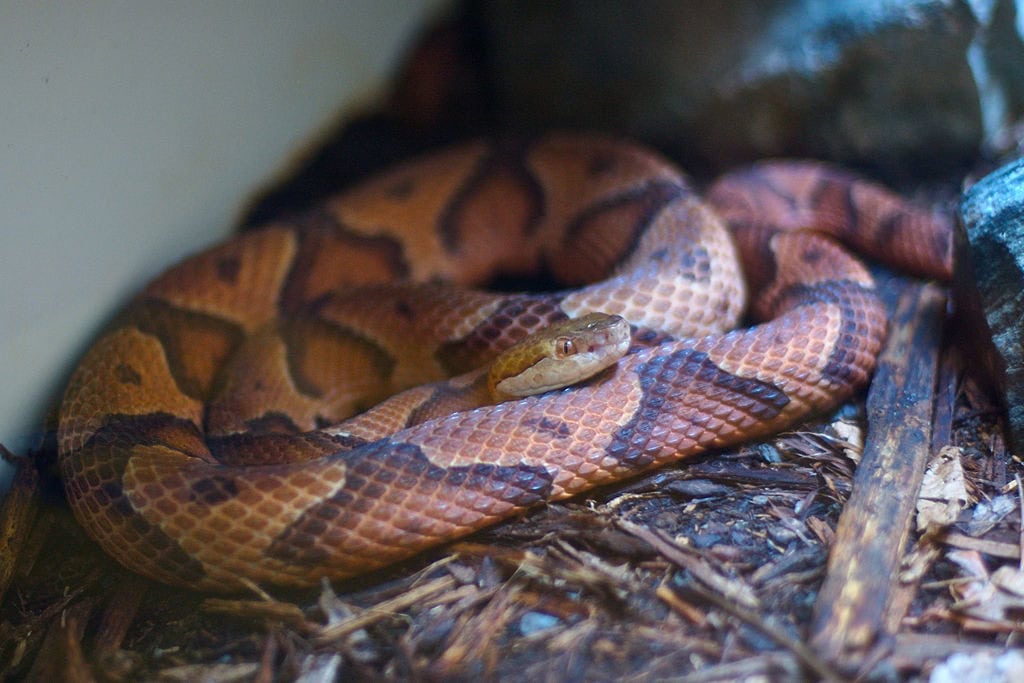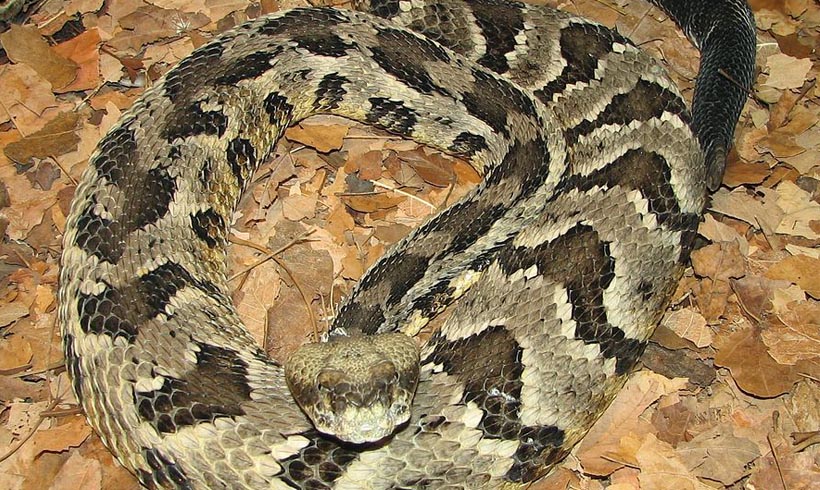A Guide to Our Region’s Snakes
Our region is home to a number of snakes, most of which are harmless. Quickly become an expert in identifying the snakes you may come across in your home/garden or on your next hike!
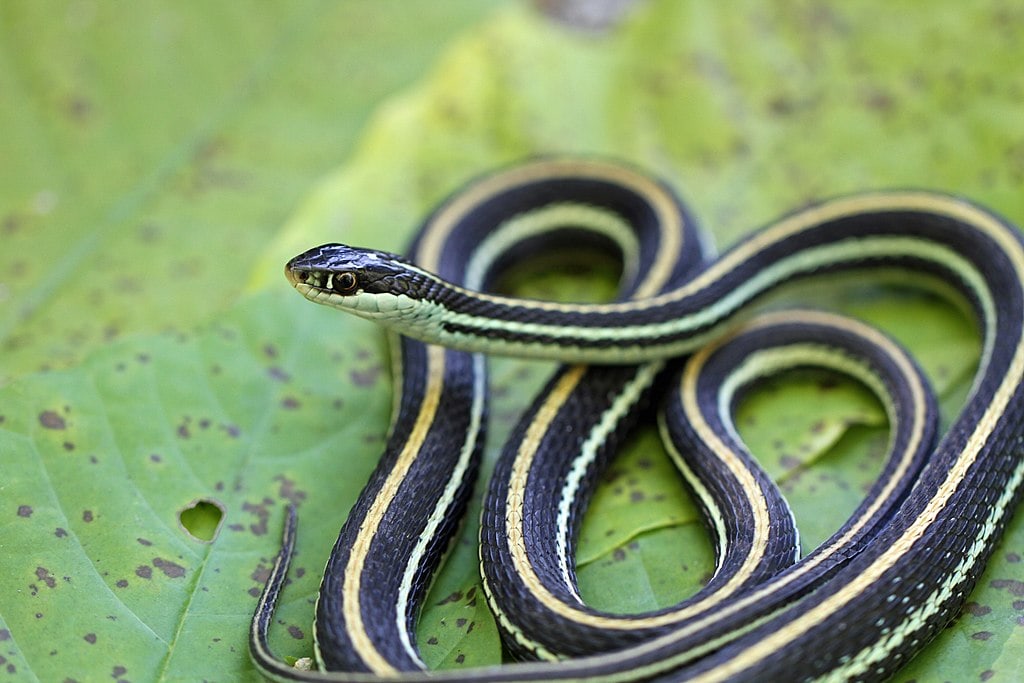
As the spring weather warms up, animals, including snakes, are becoming more active. For many people, seeing a snake in their backyard or on a hike is scary and disconcerting, especially when they have pets and children. There are many reasons people fear snakes. It may be their predatory nature, the way they slither, or how they are portrayed in myths, folktales and movies. Here in Westchester County, however, there is little need for concern when it comes to our slithery neighbors. In fact, snakes are beneficial in our suburban communities.
Snakes, as predators, are important to keeping balance in the food web and are nature’s own pest control. The presence of snakes is seen as a sign of good ecological health. A big benefit to humans is many snakes’ propensity to consume mice, a common carrier of ticks. With tick-borne illnesses on the rise, snakes provide a chemical-free, natural way to control the mouse population.
Here in New York, we have 17 native species of snakes. The most common species in Westchester County are the Eastern garter snake (Thamnophis sirtalis sirtalis), Northern black rat snake (Pantherophis obsoletus) and the Northern water snake (Nerodia sipedon). All three of these species are non-venomous and harmless to humans. Fortunately, the two venomous species in the Hudson Valley, the Northern copperhead (Agkistrodon contortrix mokasen) and the Timber rattlesnake (Crotalus horridus), are not typically found in Westchester County.
As with all wildlife, the goal is to coexist with snakes with whom we share the same space.
The best way we can coexist with snakes is to better understand them. Learn myth from fact and respect the job they have in nature. Be conscious of the species that live around you and learn to identify common ones. Seal off any cracks into your house. Snakes will enter homes for one of two reasons. In colder weather, they may seek shelter in a warm home, or be searching for food. Making sure mice aren’t attracting snakes into your home is important, but remember not to use glue traps or poison as snakes and other animals may also be harmed or killed.
If you see a snake watch it from a distance. Many species are shy and will not bother you if you don’t bother them.
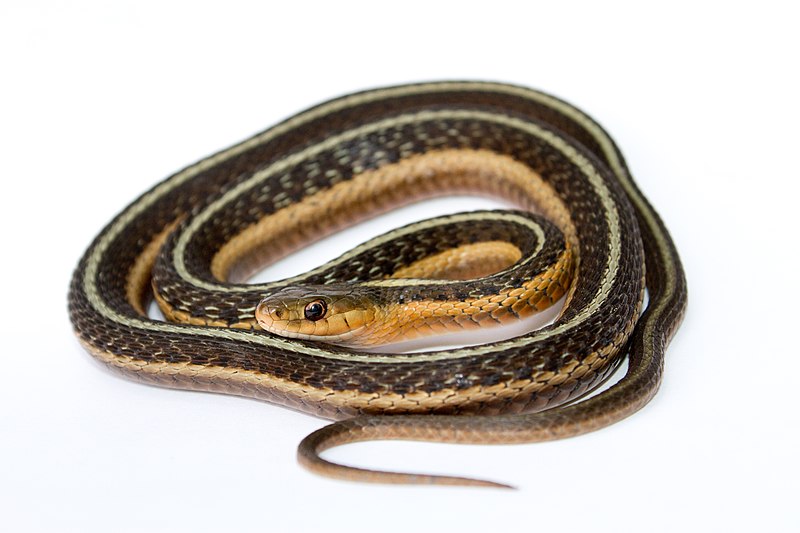
Photo by Brian Gratwicke, distributed under a CC-BY 2.0 license.
Common garter snake
Thamnophis sirtalis
Garter snakes are harmless to humans. They are 18-54 inches, highly variable in color and pattern but usually with at least three light stripes on a darker body.
Fun facts:
- Garter snakes hibernate in groups in “hibernaculums”
- They are the most widespread snake in north America
- They are ovoviviparous, meaning that they bear live young
Photo by Greg Schechter, distributed under a CC-BY 2.0 license.
Eastern ribbon snake
Thamnophis sauritus
Eastern ribbon snakes are harmless to humans, are 45-66 inches with three light strips contrasting clearly on a dark background. Ribbon snakes have a small spot of yellow in front of the eye, and an exceedingly long tail.
Fun Facts:
- They are ovoviviparous, meaning that they bear live young
- They use scent tracks to find earthworms
- They rely on movement to find toads and frogs
Photo by Judy Gallagher, distributed under a CC-BY 2.0 license.
Black rat snake
Pantherophis obsoletus
Black rat snakes are harmless to humans. They are 60 inches or more, mostly black with a black-and-white checkered belly on the front half of body, chin and throat are plain white or cream-colored, young have bold pattern with a series of light blotches.
Fun facts:
- Black rat snakes will “rattle” tail to fool predators into believing they are venomous
- They are skilled climbers!
Eastern racer
Coluber constrictor
Eastern racers are harmless to humans. They are 36-75 inches, almost completely black dorsally as an adult, some white scales on the chin and throat, belly is gray or black, a ridge above the eye, young are strongly patterned with wide brown or red blotches on a gray background, smooth scales, fast-moving.
Fun facts:
- Eastern racers are fast! Top speed is 8 to 10 mph
- Ecologically their diets are garden friendly, they prey on animals that often pose threats to plants and crops
Northern water snake
Nerodia sipedon
Northern water snakes are harmless to humans. They are 24-42 inches, dark, relatively large and heavy-bodied with brown or reddish-brown cross bands, found in aquatic habitats, front half of body is typically banded, back half is blotched, pattern is most pronounced in young, belly is white or cream with reddish-brown spots in crescent shapes.
Fun facts:
- Northern water snakes are the largest of all the water snake species
- They are known to school fish and tadpoles to the water’s edge to feed
- They can look completely different wet and dry. When the scales dry the colors appear more uniform making it hard to see the bands
- Water snakes have an anticoagulant in their saliva–when they bite their prey they can easily follow the blood trail in the water
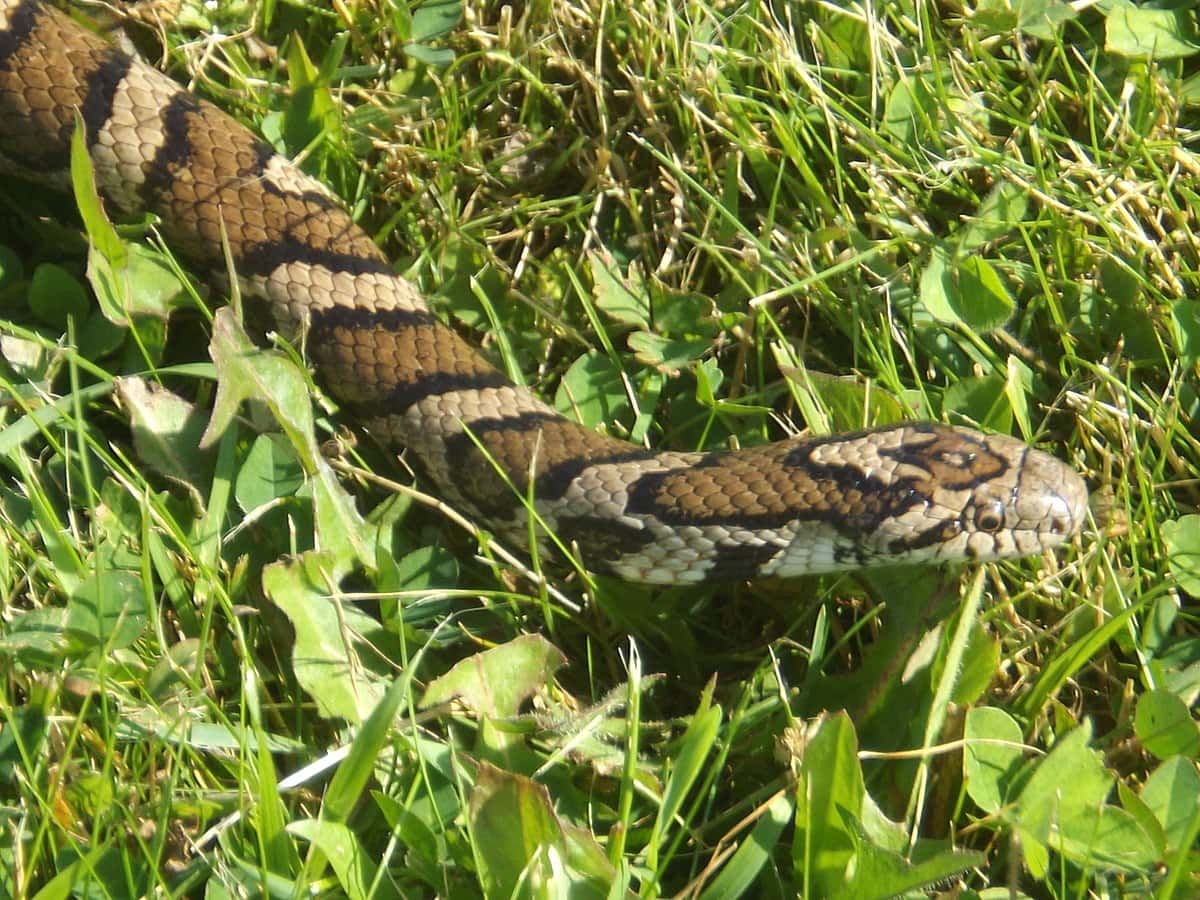
Photo by David Whelan, distributed under a CC-BY 2.0 license.
Milk snake
Lampropeltis triangulum
Milk snakes are harmless to humans. They are 24-36 inches, red or reddish-brown blotches bordered by black on a gray to tan body, blotches usually appear in three rows with lateral rows consisting of smaller spots, U– or Y–shaped light patch on back of neck, belly scales have checkerboard pattern alternating gray or white with black.
Fun facts:
- In the spring and fall they are more diurnal, while in the summer they are more nocturnal
- Milksnakes get their name due to their habit of frequenting barns and feeding on the rodents that live there. This caused people to believe they liked cow’s milk
- Milk snakes are highly variable and can often be confused with venomous snakes such as copperheads
Eastern hognose snake
Heterodon platirhinos
Eastern hognose snakes are harmless to humans. They are 20-33 inches, stocky, distinctive upturned snout, typically have bark blotches on a lighter background or nearly plain black or gray, crooked and dark band between the eyes and a dark band extending backward from the eyes, belly is lighter than the back.
Fun facts:
- They are non-venomous to humans but venomous to toads!
- They play dead when threatened. When hissing, puffing out its neck and lunging fail, it will roll onto it’s back and hang its mouth open feigning death
Photo by Brian Gratwicke, distributed under a CC-BY 3.0 license.
Ring-necked snake
Diadophis punctatus
Ring-neck snakes are harmless to humans. They are 10-15 inches, small, slender, bluish-gray with shiny smooth scales, a yellow belly, and distinct yellow ring behind the head.
Fun fact:
- They have a unique defense posture. When threatened, they will curl up its tail to expose bright red/orange belly
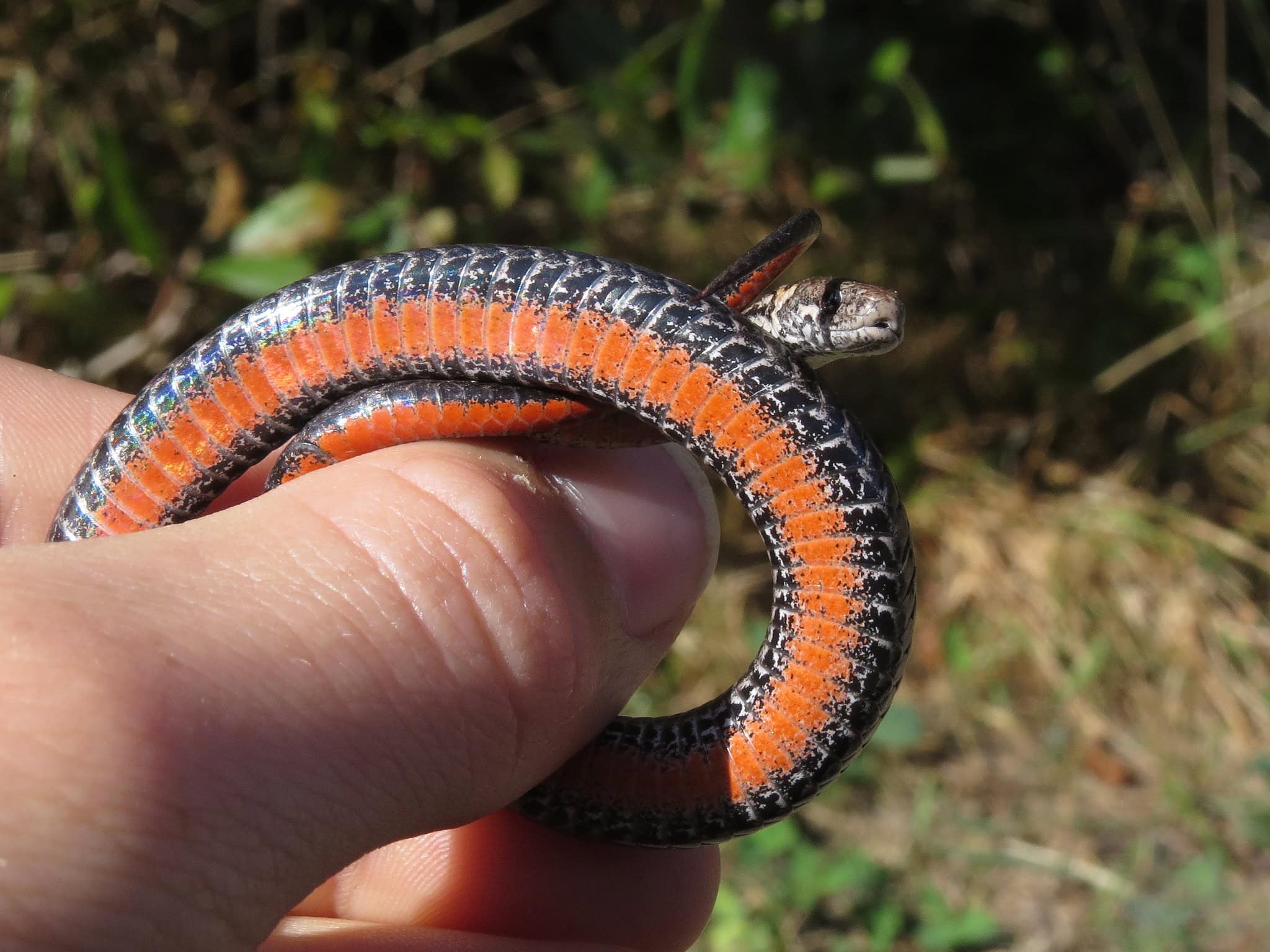
Photo by Fyn Kynd, distributed under a CC-BY 2.0 license.
Red-bellied snake
Storeria occipitomaculata
Red-bellied snakes are harmless to humans, 8-10 inches, small, brown or gray with a distinctive red belly and three light spots behind the head, appear in two color morphs: backs that are brown or reddish brown and backs that are gray, four narrow black stripes and a faint light strip in the middle of the back.
Fun fact:
- They are a gardeners friend! They feeds on slugs, worms and insect larvae
Photo by Don Becker, distributed under a CC-BY 4.0 license.
Smooth green snake
Opheodrys vernalis
Smooth green snakes harmless to humans, are 12-20 inches, small, slender, bright green sides and black with white to yellow underside, tail is long and tapering, new-borns appear dark green or bluish gray, scales are smooth.
Fun fact:
- Smooth green snakes are great pest control. But due to their diet consisting of insects, they are very vulnerable to pesticides and insecticides
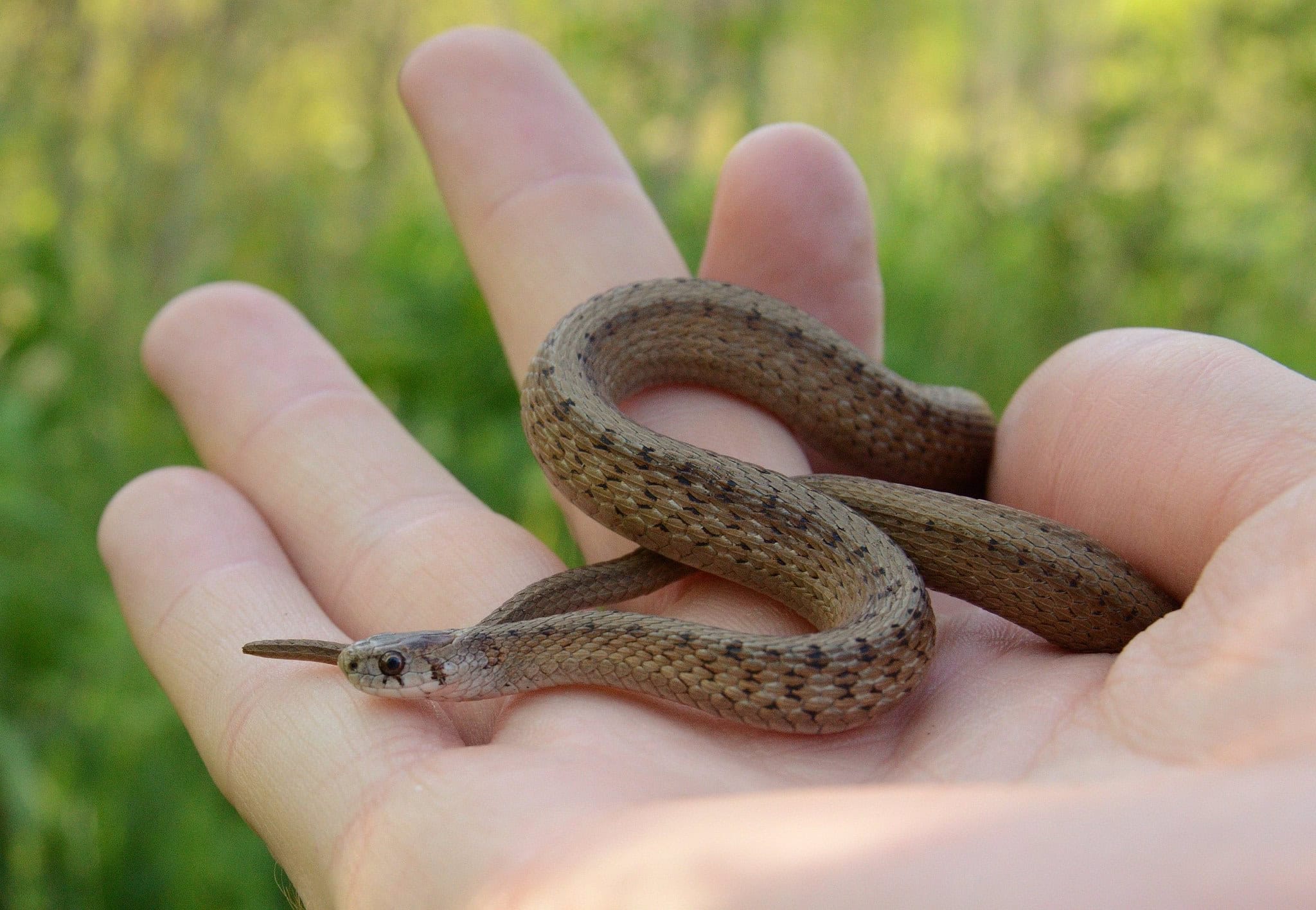
Photo by Mark Nenadov, distributed under a CC-BY 2.0 license.
Dekay’s / brown snake
Storeria dekayi
Dekay’s/brown snakes are harmless to humans. They are brown to gray, with a lighter center stripe bordered by small black spots. Adults usually measure less than 12 inches, and feed primarily on slugs, snails and earthworms.
Fun facts:
- They get their name in honor of a 18th century naturalist James Ellworth Dekay
Photo by Jeff Kubina, distributed under a CC-BY 2.0 license.
Copperhead
Agkistrodon contortrix
Copperheads are venomous. They are 24-36 inches, coppery red and wide head, dark cross bands in an hourglass pattern down the back, no rattle at the end of tail, belly is typically pink, light brown, or cream-colored, type of pit viper, distinct facial pits between the eyes and nostrils.
Fun facts:
- They rely heavily on camouflage to keep safe. Unlike other snakes that flee, copperheads freeze in place if they sense danger
- Young copperheads have a yellow-tipped tail
Timber rattle snake
Crotalus horridus
Timber rattle snakes are venomous. They are 36-60 inches, stout-bodied, dark and yellow phases, wide head, facial pits, set of rattles at the tip of the tail, patterned back with bands and blotches of lighter color (black morph), yellow or tan on the back with dark brown or gray bands and blotches and a yellow head (yellow morph), tail is uniformly black, belly is white to grayish with some dark flecks.
Fun facts:
- They do not use venom for defense. Its basic purpose is to freeze prey and aid in digestion
- They consume 3x their body weight in rodents every year!


